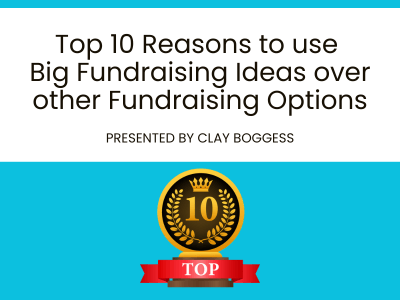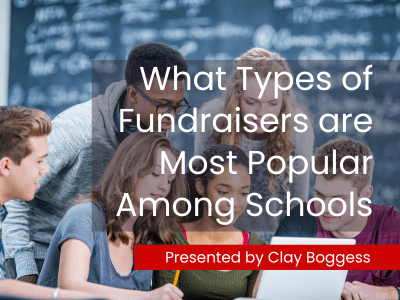
The reasons not all prize programs are equal.
Many sponsors don't give their prize program a second thought. If it contains decent prizes and reasonable prize levels, why spend another minute worrying about it? After all, every school fundraising company offers the same prizes, right?
Plus, if you have a good brochure that people in the community will buy out, that's all you need. Your students always seem to sell regardless, and you make enough money to pay for most things you want to do anyway. Finally, change can be risky, and if something isn't broken, why go to the trouble of trying to fix it?
The Philosophy Behind Traditional Prize Programs
Most companies offer a similar type of prize program, with the least expensive prizes at the lower levels and the more expensive prizes at the higher levels. Who would argue with that? One should have to sell more to earn better prizes. The problem is most of your students will only sell enough items from their brochure to win cheap prizes and end up disappointed.
In the beginning, students are mesmerized by the bigger prizes. However, reality sets in once they take their packet home and look more closely at the prize program. They're going to have to sell a bunch of items to reach the higher prize levels. Many students end up not selling because they become discouraged. Those who do sell only reach the first or second prize level. Over time, this results in seller apathy as students get older. Since your students drive your fundraiser, you won't be as successful if they're not enthusiastic. What are some possible solutions to overcome this?
The Big Event Prize Program Difference
To increase fundraiser sales, you must increase student participation. Your most excellent resource is your students. What if, instead, you made your biggest prize easy to win? Is this possible? Would more students participate if they knew they could win something exciting by selling a few items?
We've found this to be the case with our big event prize programs. What follows are the results of some elementary schools that we worked with. We initially show their previous sales using a traditional prize program. We then list their results after switching to a big event prize program.
| School | Traditional Prize Program | Big Event Prize Program | Sales Increase |
| Milton Elementary | $24,000 | $42,000 | $18,000 |
| Webb Elementary | $20,000 | $43,000 | $23,000 |
| Newgulf Elementary | $35,000 | $47,000 | $12,000 |
| Stricklin Elementary | $15,000 | $27,000 | $12,000 |
| Kostoryz Elementary | $12,000 | $31,000 | $19,000 |
| Noonan Elementary | $8,000 | $27,000 | $19,000 |
These results happened because students could attend an exciting event by reaching an easily obtainable sales goal. The pressure to have to sell a lot of items to win something fun and exciting was removed. The result was a significant increase in student participation, resulting in much higher sales.
Did some students sell more items than others? Yes, just like with other prize programs, there are higher levels that also allow students to accumulate additional prizes and special privileges. Very few students reached the highest prize levels, but it didn't matter as much because more students sold than in the traditional prize program.
It's true better prize programs increase fundraiser sales.
Author Bio
Clay Boggess has been designing fundraising programs for schools and various nonprofit organizations throughout the US since 1999. He’s helped administrators, teachers, and outside support entities such as PTAs and PTOs raise millions of dollars. Clay is an owner and partner at Big Fundraising Ideas.



